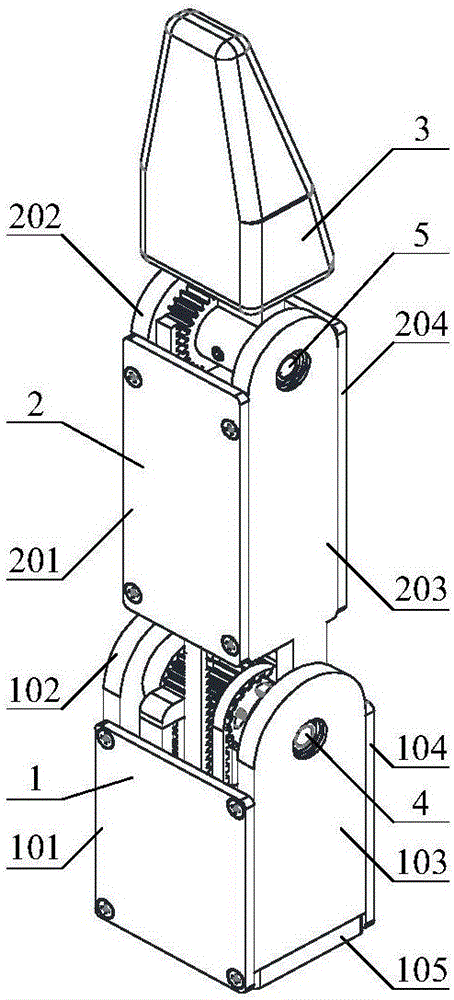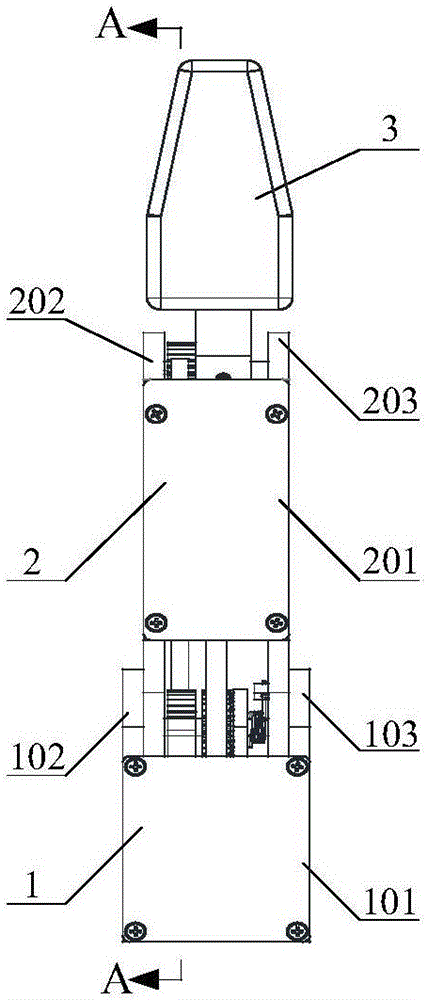Translational motion idle-stroke transmission coupled and self-adaptive robot finger device
A robotic finger and self-adaptive technology, applied in the direction of manipulators, chucks, manufacturing tools, etc., can solve the problems of complex transmission, large number of parts, easy relaxation and deformation of flexible parts, etc., to achieve precise and stable transmission, high degree of anthropomorphism, grip Get stable and reliable results
- Summary
- Abstract
- Description
- Claims
- Application Information
AI Technical Summary
Problems solved by technology
Method used
Image
Examples
Embodiment Construction
[0037] The specific structure and working principle of the present invention will be further described in detail below in conjunction with the accompanying drawings and embodiments.
[0038] An embodiment of the translational lost motion transmission coupling adaptive robot finger device designed by the present invention, such as Figure 1 to Figure 8As shown, it includes a base 1, a first finger segment 2, a second finger segment 3, a proximal joint shaft 4, a distal joint shaft 5, a driver 12 and a transmission mechanism; the proximal joint shaft 4 is movably sleeved in the base 1 The first finger segment 2 is movably socketed on the proximal joint shaft 4; the distal joint shaft 5 is sleeved in the first finger segment 2; the second finger segment 3 is socketed on the distal joint shaft 5; The driver 12 is fixedly connected to the base 1; the transmission mechanism is arranged in the base 1; the output shaft of the driver 12 is connected to the input end of the transmission...
PUM
 Login to View More
Login to View More Abstract
Description
Claims
Application Information
 Login to View More
Login to View More - R&D
- Intellectual Property
- Life Sciences
- Materials
- Tech Scout
- Unparalleled Data Quality
- Higher Quality Content
- 60% Fewer Hallucinations
Browse by: Latest US Patents, China's latest patents, Technical Efficacy Thesaurus, Application Domain, Technology Topic, Popular Technical Reports.
© 2025 PatSnap. All rights reserved.Legal|Privacy policy|Modern Slavery Act Transparency Statement|Sitemap|About US| Contact US: help@patsnap.com



